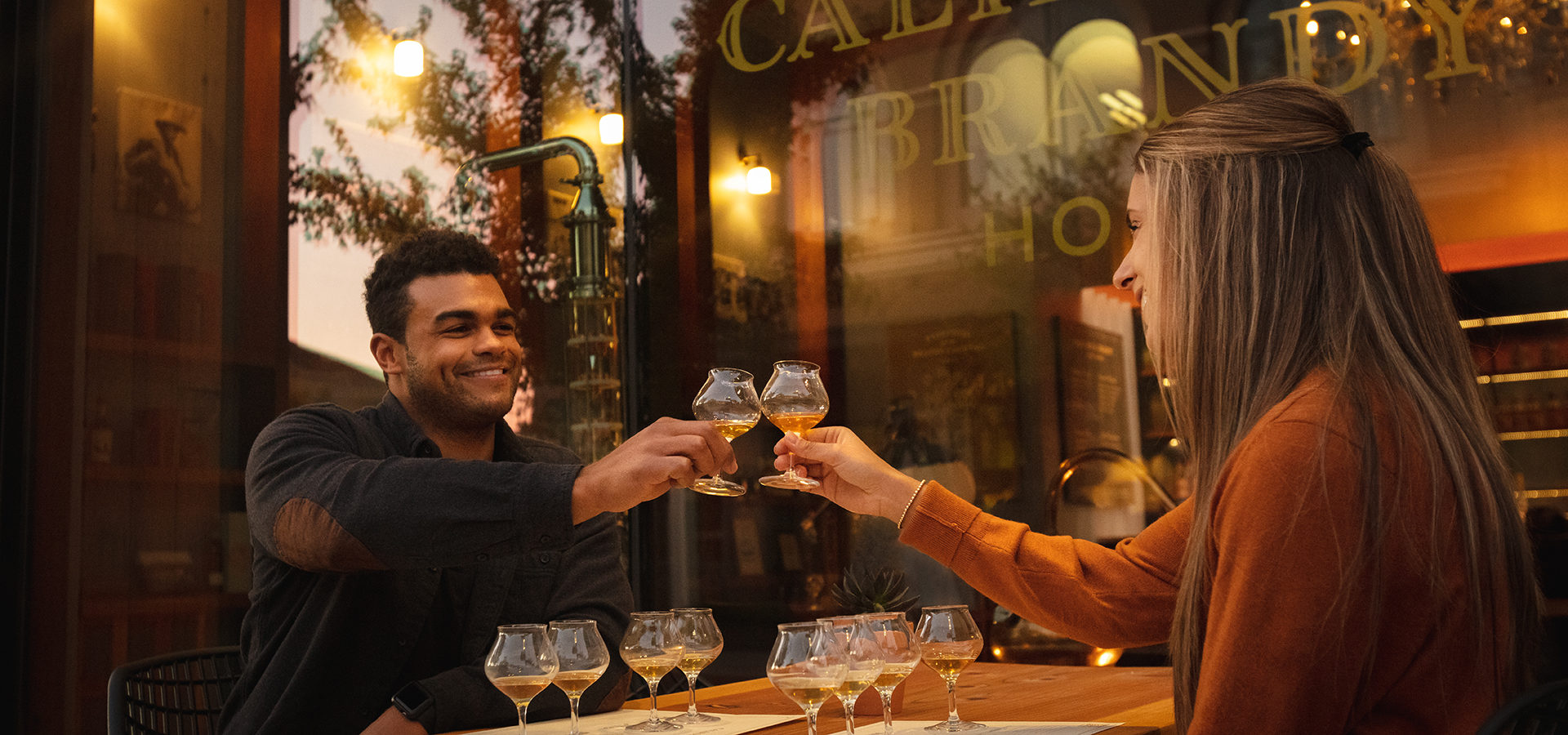A Downtown Napa Tasting Room Embraces an Unexpected and Storied Local Spirit
California’s distilling heritage takes center stage at a new brandy house.
-
CategoryExperiences, Farm + Table, Makers + Entrepreneurs, Mixology, Small Businesses, Tours, Unwind
-
Written byShaun Tolson
Those familiar with California wine country will notice something new in downtown Napa, especially if this summer marks their first visit back to the heart of the valley’s wine region since the start of the pandemic. Not surprisingly, this new tasting room’s roots are intertwined with the area’s famous grapevines, but the enterprise is dedicated to a commodity that for almost 50 years has been upstaged by the exemplary Chardonnays and Cabernet Sauvignons that have solidified Napa’s reputation as a world-class winemaking destination.
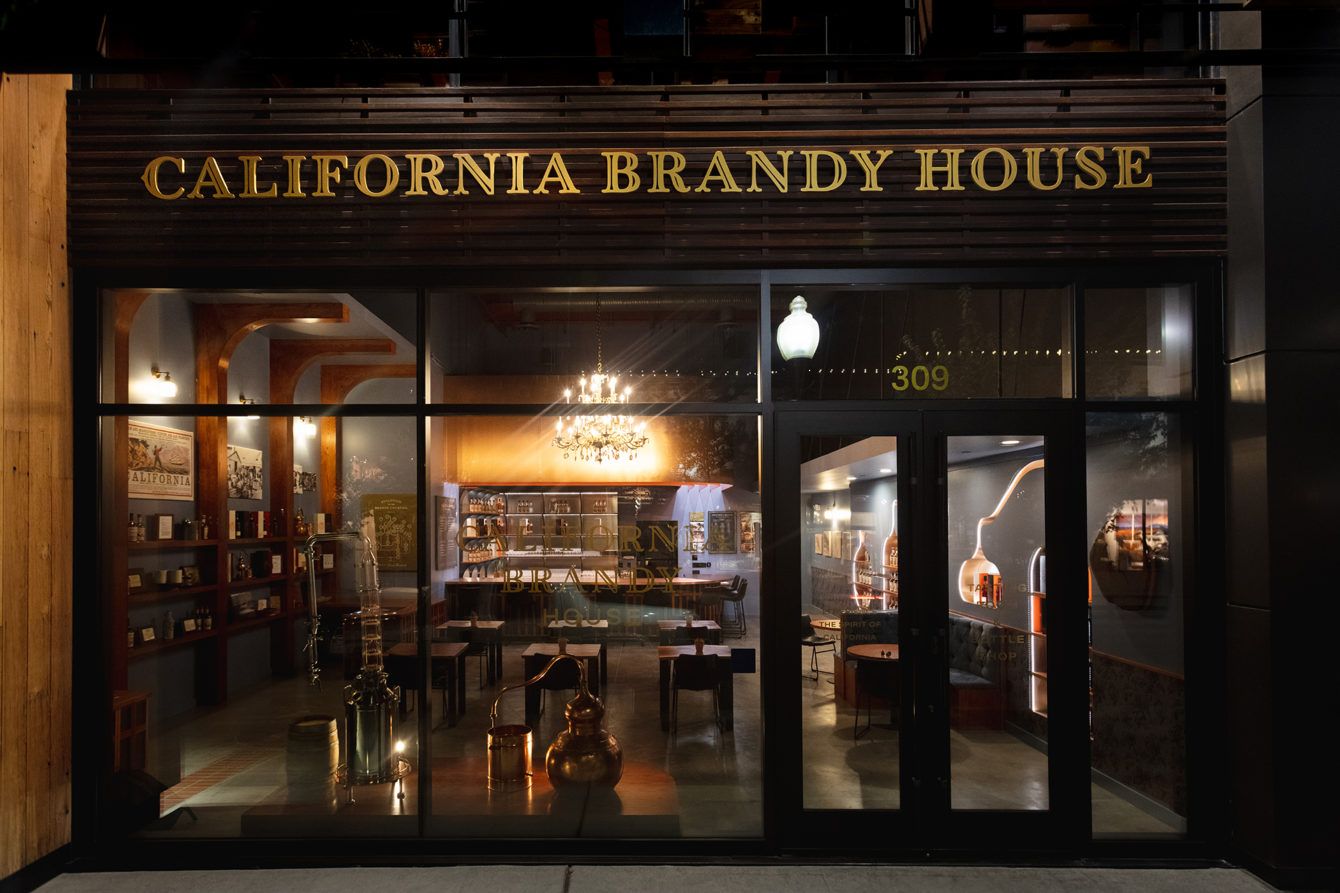
As its name suggests, the California Brandy House is all about artisan brandies that are distilled in the Golden State and crafted from Californian grapes. “There is no better place than Napa Valley, the heart of wine country, to re-establish California brandy among the world’s best distilled spirits,” says Britt West, vice president and general manager of the spirits division at E&J Gallo Winery, which conceptualized and developed the establishment.

Located on the north side of First Street—in a walkable district home to a bevy of specialty merchants, art galleries, tasting rooms, and eateries—the California Brandy House is leveraging the burgeoning brown spirits craze that has swept across the United States for the better part of two decades. Moreover, the new tasting room and bottle shop is riding the craft cocktail wave that continues to surge forward. “Many of the cocktails that we think of today as whiskey cocktails were originally brandy cocktails,” West says. “They were part of that Gold Rush cocktail movement in San Francisco, and it was really Prohibition and the emergence out of Prohibition where whiskey usurped brandy.”

In that way, the California Brandy House is focused on more than just expertly crafted brandies. It also aims to educate and enlighten guests about California’s history, including the Gold Rush period that saw San Francisco’s population increase by 2,000 percent and the entire state’s population rise by 300 percent. As West explains, California’s history is inextricably linked to Franciscan missionaries, who also introduced brandy-making along the entire South American coast. “That piece of the history is super cool,” he says. “We’ve tried to capture the archival interest of how this all came about, intertwining that historical element of the missionaries, how they brought grapes and winemaking and distillation techniques forward, and what the Gold Rush meant.”
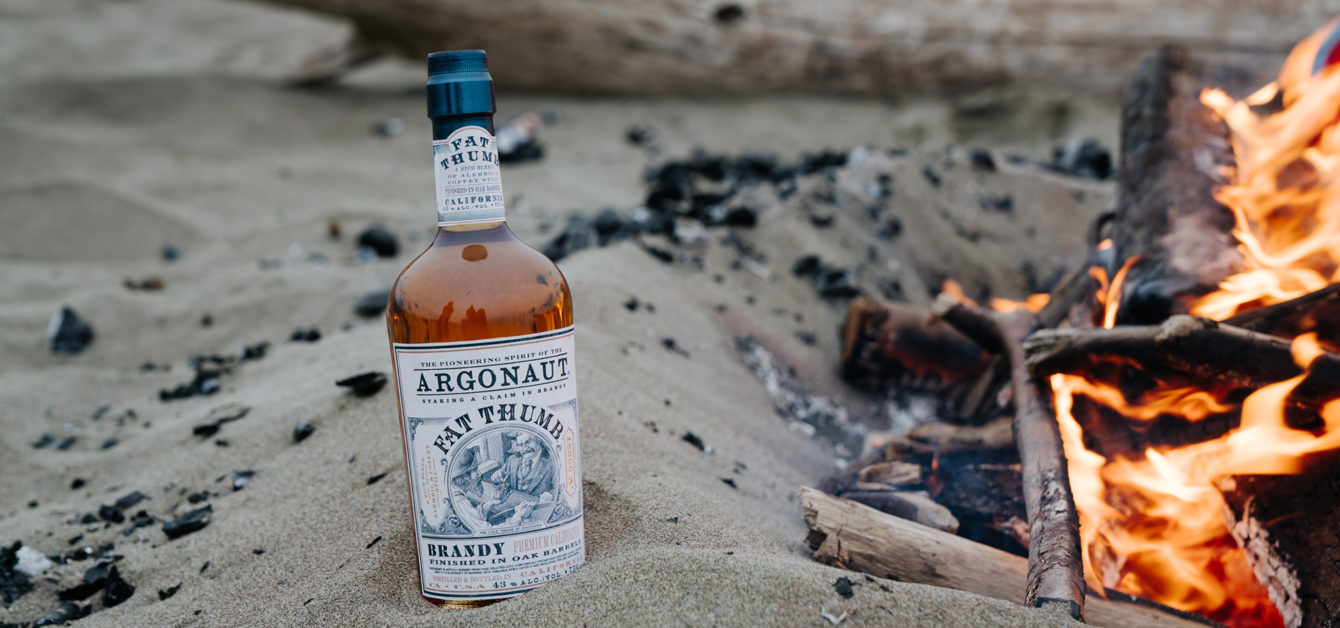
With its grand opening in early November 2020, almost eight months into a more-than-one-year-long pandemic, the California Brandy House met its fair share of challenges right out of the gate. Yet, West believes the timing was advantageous. Cocktail enthusiasts who had almost exclusively ventured out of the house for their tipples before the pandemic suddenly had to pick up a jigger and develop (or refresh) their home bartending skills once restaurants and cocktail dens were forced to suspend their dining room and bar service. That swell of at-home cocktail making and experimentation led to an uptick in cocktail book sales, which ultimately enhanced consumers’ knowledge of—and appreciation for—the art and craft of the cocktail. Consequently, such impassioned education sparked an interest in artisan brandy.

“From that standpoint, this is the right place and right time for the California Brandy House,” West says. “What we want to do is expose consumers to the fact that yes, with great brandy the snifter and specialty glassware can be one part of it, but it can work as a base in great cocktails, as well. It’s really brandy taking back some of the cocktails that it rightfully owned to begin with.”
To do that, the brandy house spotlights four distinctive expressions that comprise the Argonaut brand. Created in a manner similar to that of making whiskey, these blended brandies are distilled using both alembic and coffey stills—some of which occurs inside one of California’s oldest distilleries—after which they’re laid down inside ex-bourbon barrels. The final blending process brings together more than 100 aged brandies, some young and vibrant, others luscious and rich—their depth of flavor cultivated from more than two decades of barrel maturation.
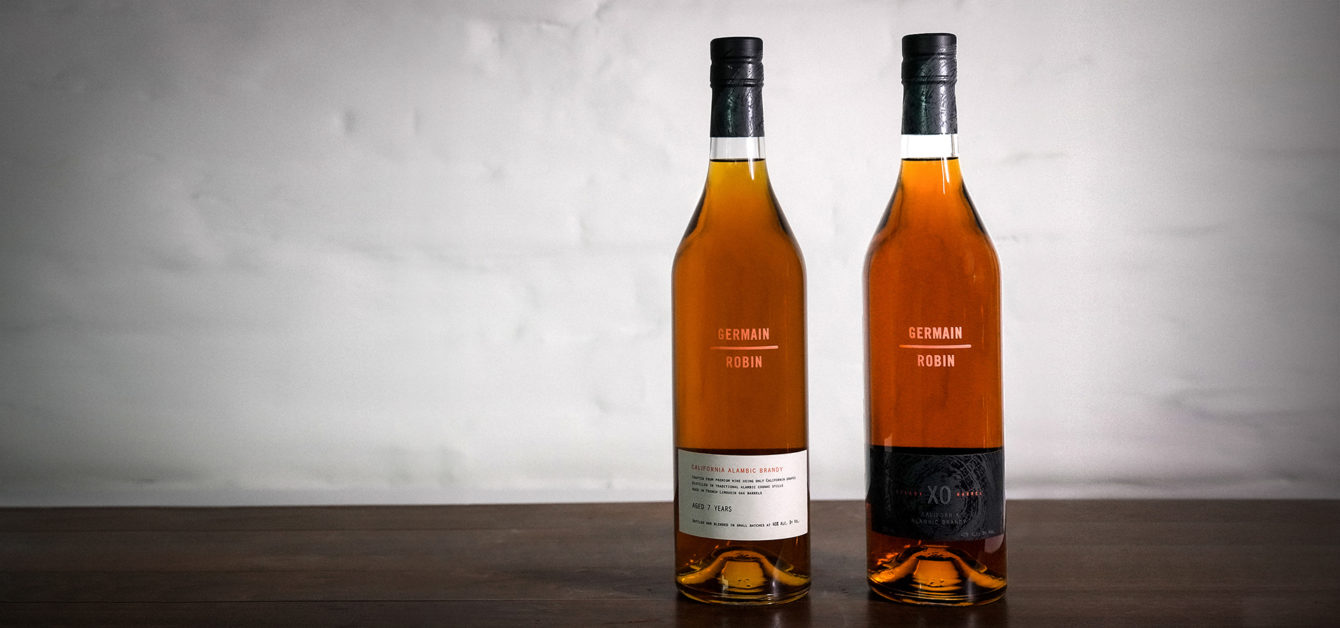
“Across different tasting flights we’re trying to highlight the distillation techniques, the blending techniques, and the [grape] varietals that are all making for different flavor profiles to be consumed and enjoyed in different ways,” West explains. “Everything from Saloon Strength, which was blended to be a mixing brandy with a little bit higher proof and a little bit lighter body to be able to cut through the different mixers, to Fat Thumb, with much greater depth and mouthfeel and with flavors that are designed to be enjoyed neat or over a single ice cube.”
The brandy house’s tasting flights and bottle sales extend beyond just the Argonaut brand; they also include artfully crafted spirits produced by Ansley Coale and Hubert Germain-Robin, who collaborated to form the Germain-Robin label in 1982. “They did things that commercially aren’t scalable but are really unique,” West says, acknowledging that the California Brandy House has become a place where those limited offerings—like a solitary barrel of a single vintage pinot noir brandy—can be showcased and sold.

According to West, the brandy house will continue to emphasize the inclusion of such unique offerings as part of its tasting flights and, whenever possible, through its bottle sales. “It’s constantly adding new expressions and new varieties and offering something unique in that way that will keep it fresh,” he says.
There’s no shortage of unique brandies that could be introduced in the future, either, since the parameters for distilling California brandy are quite broad. “We have brandy made from more than 100 different varietals—red grapes, white grapes, things that have traditionally not been thought of to create grape brandy,” West says. “The lack of restriction is what encourages experimentation and the art of what’s possible with flavor profiles. That’s one of the most exciting pieces of what California brandy can offer. These fine brandies are as rich, vibrant, and complex as the land itself.”
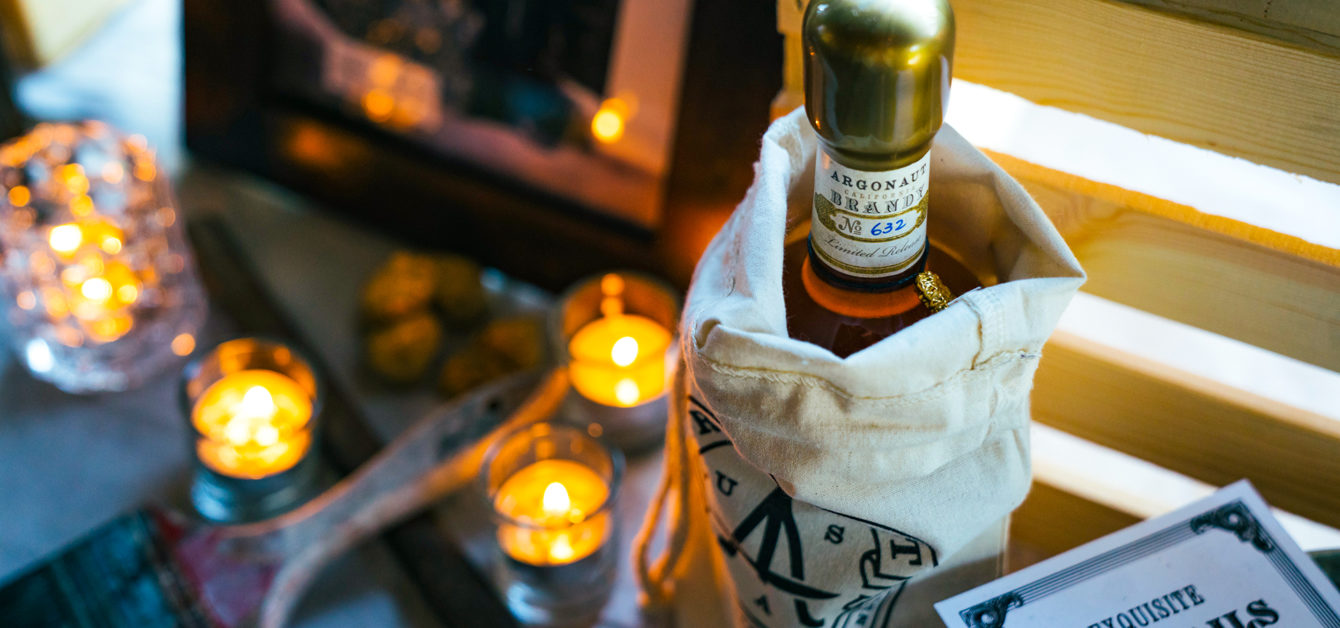
As West acknowledges, the establishment of the California Brandy House in downtown Napa is just the first step in a much longer journey to further legitimize and popularize the diverse collection of brandies that can be distilled from California-grown grapes. In time, multiple houses may be opened in areas farther removed from wine country. West even envisions a time when the Golden State might be home to a brandy trail that could rival the significance of Kentucky’s bourbon trail.
“The freedom of opportunity is what excites me most,” he says. “To see what will come in the next wave of innovation. As we grow the California brandy category, it will inspire new entrepreneurs and new ways of thinking.”
A.D. 100 Designer Jeremiah Brent Opens Atrio in Culver City
Home for the holidays.
French Dip Originated in Los Angeles. But Who Deserves the Credit?
Two chefs. Two claims to fame.
Some California Veterans Are Making Green in the Lucrative Cannabis Industry
From combat to armed cargo.
Get the Latest Stories




